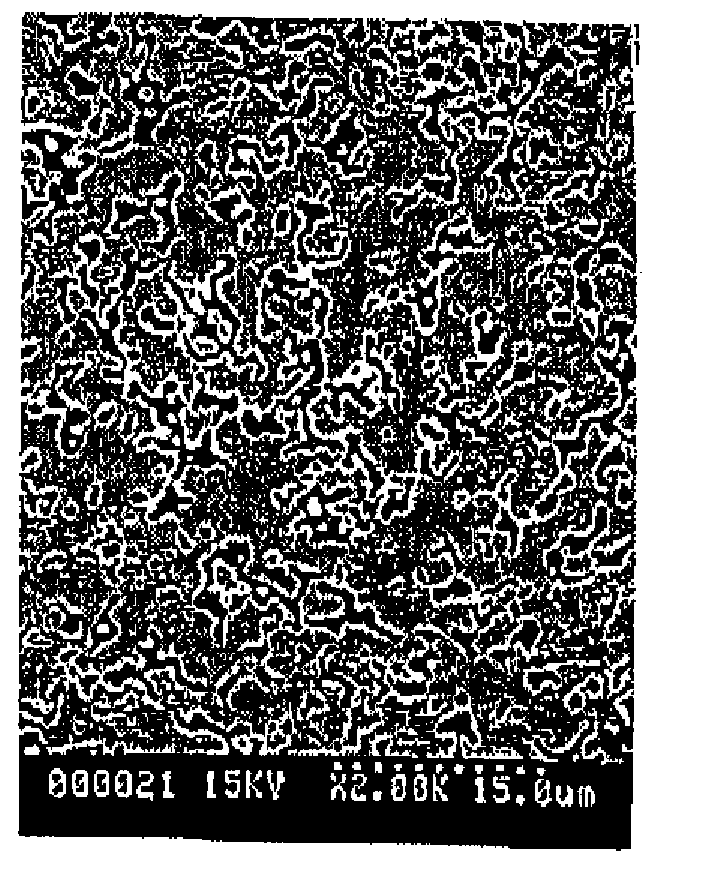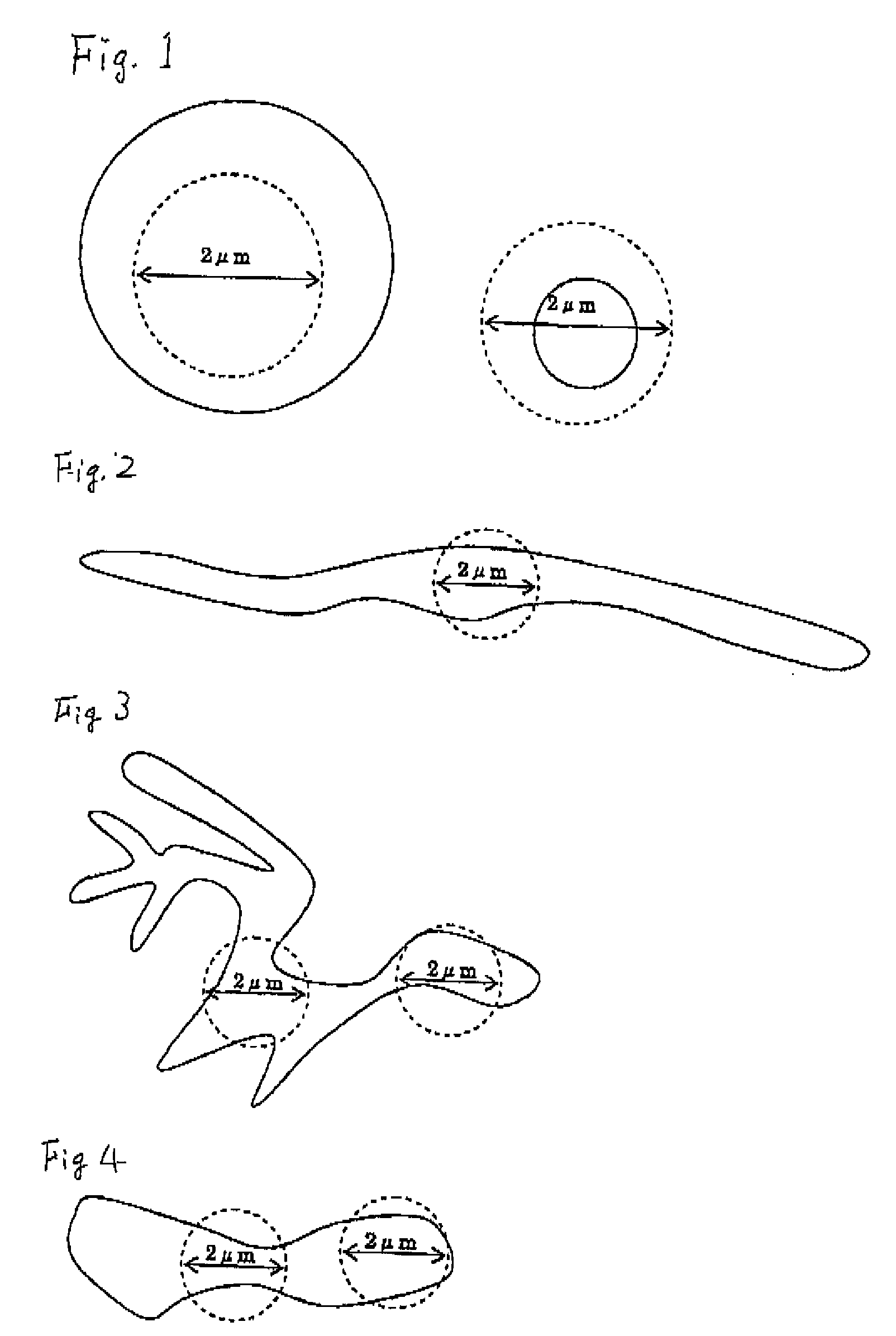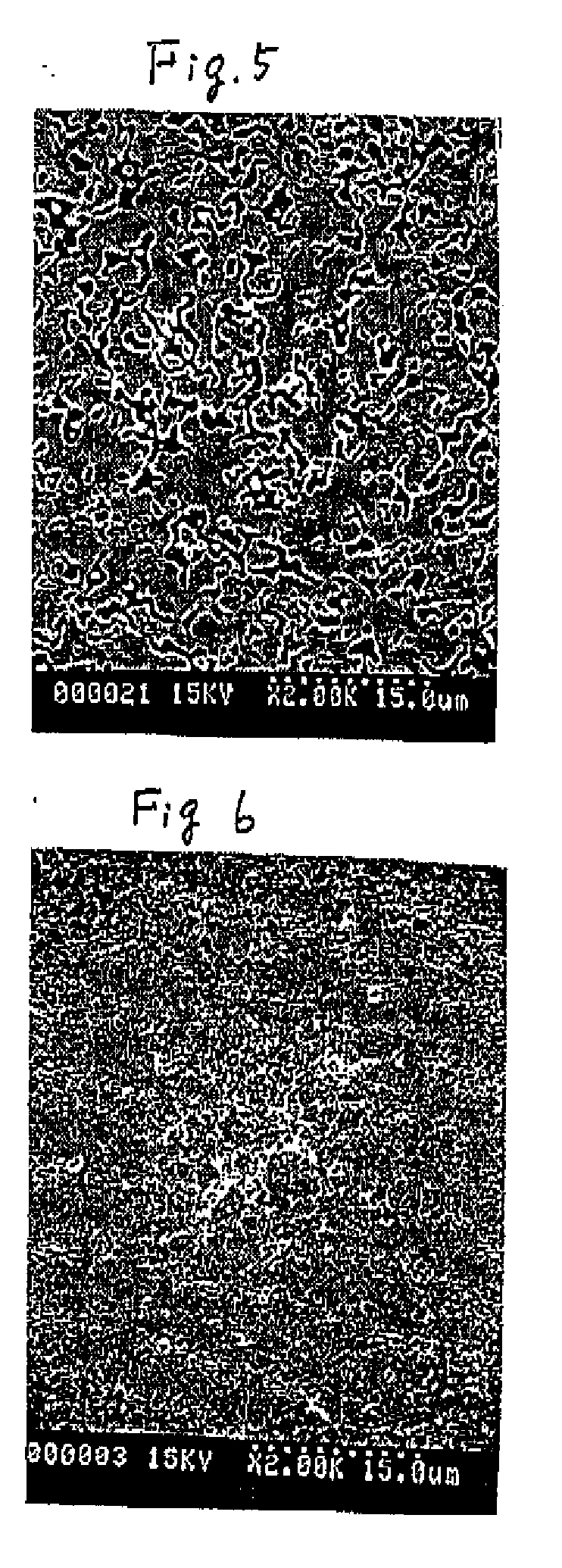Nonmagnetic Material Particle Dispersed Ferromagnetic Material Sputtering Target
a ferromagnetic material and non-magnetic material technology, applied in the direction of electrolysis components, vacuum evaporation coatings, coatings, etc., can solve the problems of inferior sputtering efficiency, high cost of rf (radio frequency) sputtering devices, large power consumption, etc., to achieve favorable sputtering efficiency, fast deposition speed, and superior
- Summary
- Abstract
- Description
- Claims
- Application Information
AI Technical Summary
Benefits of technology
Problems solved by technology
Method used
Image
Examples
example 1
[0054]As sintering raw material powder, a magnetic material of Co fine powder, Cr fine powder, and Pt fine powder respectively having a grain size that is less than 5 μm was used, and at the same time SiO powder having an average grain size of 1 μm was used. This was weighed to achieve 94(74Co-10Cr-16Pt)-6SiO2 (mol %), and mixed in a wet ball mill for 100 hours. Subsequently, the mixed powder was filled in a carbon mold, and sintered with the hot press method at 1200° C. for 1 hour to obtain a ferromagnetic body material target composed of 94(74Co-10Cr-16Pt)-6SiO2.
[0055]The relative density of this target was 98%, and a high density target was obtained. The results are shown in Table 1. The SEM image of the polished face of the target is shown in FIG. 5. As shown in FIG. 5, thin thread-shaped fine SiO2 particles were dispersed therein.
[0056]The distance from an arbitrary point in the SiO2 particles as the nonmagnetic material to the interface upon drawing a perpendicular line toward...
example 2
[0059]As sintering raw material powder, a magnetic material of Co fine powder, Cr fine powder, and Pt fine powder respectively having a grain size that is less than 5 μm was used, and at the same time Ta2O5 powder having an average grain size of 1 μm was used. This was weighed to achieve 97(74Co-10Cr-16Pt)-3Ta2O5 (mol %), and mixed in a ball mill for 60 hours. Subsequently, the mixed powder was filled in a carbon mold, and sintered with the hot press method at 1200° C.; for 1 hour to obtain a ferromagnetic body material target composed of 97(74Co-10Cr-16Pt)-3Ta2O5 (mol %).
[0060]The relative density of this target was 98%, and a high density target was obtained. The results are shown in Table 1. The SEM image of the polished face of the target is shown in FIG. 6. As shown in FIG. 6, simulated spherical fine Ta2O5 particles were dispersed therein.
[0061]The distance from an arbitrary point in the Ta2O5 particles as the nonmagnetic material to the interface upon drawing a perpendicular ...
example 3
[0064]As sintering raw material powder, a magnetic material of Co fine powder, Cr fine powder, and Pt fine powder respectively having a grain size that is less than 5 μm was used, and at the same time commercially available Cr2O3 powder having an average grain size of 1 μm was used. This was weighed to achieve 94(74Co-10Cr-16Pt)-8 Cr2O3 (mol %), and mixed in a ball mill for 100 hours. Subsequently, the mixed powder was filled in a carbon mold, and sintered with the hot press method at 1200° C. for 1 hour to obtain a ferromagnetic body material target composed of 94(74Co-10Cr-16Pt)-8Cr2O3 (mol %).
[0065]The relative density of this target was 98%, and a high density target was obtained. The results are shown in Table 1. The SEM image of the polished face of the target is shown in FIG. 7. As shown in FIG. 71 thin thread-shaped fine Cr2O3 particles were dispersed therein.
[0066]The distance from an arbitrary point in the Cr2O3 particles as the nonmagnetic material to the interface upon d...
PUM
| Property | Measurement | Unit |
|---|---|---|
| Diameter | aaaaa | aaaaa |
| Diameter | aaaaa | aaaaa |
| Size | aaaaa | aaaaa |
Abstract
Description
Claims
Application Information
 Login to View More
Login to View More - R&D
- Intellectual Property
- Life Sciences
- Materials
- Tech Scout
- Unparalleled Data Quality
- Higher Quality Content
- 60% Fewer Hallucinations
Browse by: Latest US Patents, China's latest patents, Technical Efficacy Thesaurus, Application Domain, Technology Topic, Popular Technical Reports.
© 2025 PatSnap. All rights reserved.Legal|Privacy policy|Modern Slavery Act Transparency Statement|Sitemap|About US| Contact US: help@patsnap.com



